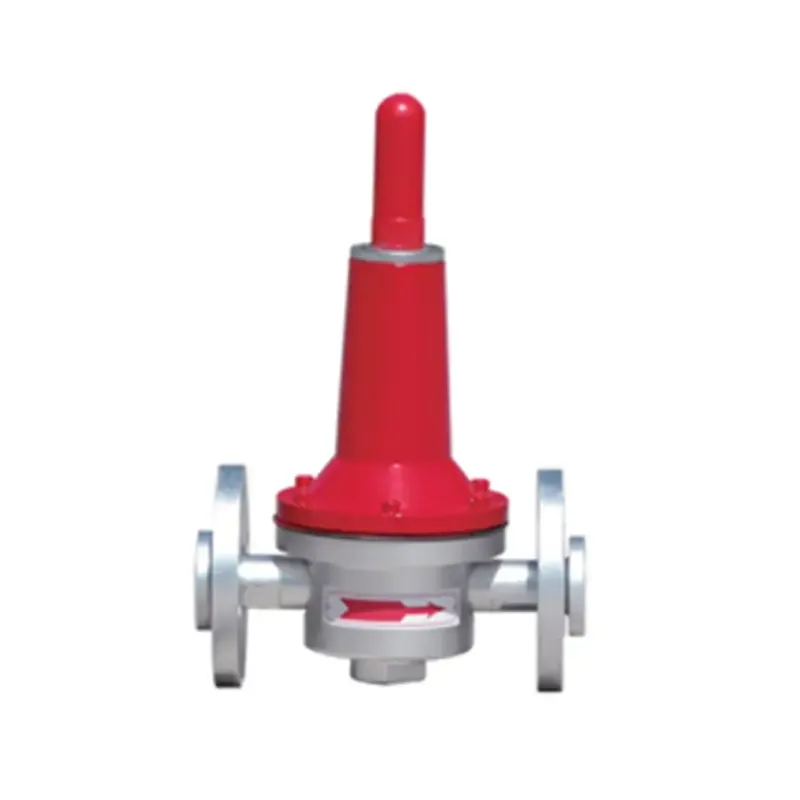
Oct . 12, 2024 08:47
Back to list
Isolation Valve Functionality and Importance in Fluid Control Systems
Understanding Shut-Off Valves Types, Functions, and Importance
Shut-off valves play a crucial role in various industrial, residential, and commercial applications. They are essential components in piping systems that regulate fluid flow, ensuring the safety and efficiency of operations. This article explores the different types of shut-off valves, their functions, and their importance in various fields.
What is a Shut-Off Valve?
A shut-off valve is a device used to stop or allow the flow of fluids (liquids or gases) in a pipeline. This mechanism can be operated manually or automatically and is critical for control and safety. Shut-off valves are typically installed at various points in a piping system, allowing operators to isolate portions of the system for maintenance, repairs, or emergencies.
Types of Shut-Off Valves
There are several types of shut-off valves, each designed for specific applications and fluid types. The most common types include
1. Gate Valves These valves feature a wedge-shaped gate that can be raised or lowered to control flow. They are best suited for applications that require a straight-line flow of fluid with minimal pressure drop. Gate valves are typically used in larger pipelines.
2. Ball Valves Ball valves use a spherical disc (the ball) that rotates to open or close the flow. They offer excellent sealing capabilities, making them ideal for high-pressure and high-temperature environments. Ball valves are commonly used in oil and gas, chemical industries, and water supply systems.
3. Globe Valves Designed for throttling flow, globe valves have a spherical body and an internal baffle. They provide good flow control and are often used in applications where flow regulation is necessary.
4. Butterfly Valves These valves consist of a rotating disk that tilts to control fluid flow. Butterfly valves are lightweight, compact, and suitable for large-scale applications, such as in water distribution and HVAC systems.
.
Functions of Shut-Off Valves
صمام الإغلاق

The primary function of shut-off valves is to control the flow of fluids in pipelines. They fulfill several critical roles
- Isolation Shut-off valves allow sections of a system to be isolated for maintenance or repairs without draining the entire system. This helps in minimizing downtime and improving operational efficiency.
- Safety In case of leaks, valve failure, or emergencies, shut-off valves can quickly halt the flow of hazardous fluids, protecting both personnel and equipment.
- Flow Control By regulating fluid flow, shut-off valves help in maintaining desired pressure and temperature levels in processes, ensuring optimal performance.
- System Maintenance Shut-off valves facilitate easier maintenance of pumps, compressors, and other equipment by allowing for isolated work without interrupting the entire operation.
The Importance of Shut-Off Valves
The significance of shut-off valves cannot be overstated. In industrial settings, they are vital for the safe and efficient operation of complex systems involving chemicals, gases, and water. Their ability to control and isolate flow is essential not only for maintenance purposes but also for preventing accidents and leaks.
In residential settings, shut-off valves are part of every plumbing system, allowing homeowners to stop the water supply in case of a burst pipe or plumbing issues. This instant control can prevent extensive water damage and costly repairs.
Furthermore, as industries strive for enhanced safety protocols and regulatory compliance, the importance of reliable shut-off valves has grown. Regular maintenance and inspections of these valves ensure their proper functioning, contributing to overall system reliability and safety.
Conclusion
Shut-off valves are an indispensable component of countless systems across various sectors. Understanding their types, functions, and importance enhances our awareness of their role in fluid control and safety. By ensuring that shut-off valves are properly installed, maintained, and operated, industries can protect personnel, equipment, and the environment, ultimately leading to efficient and safe operations.
Next:
Latest news
-
Safety Valve Spring-Loaded Design Overpressure ProtectionNewsJul.25,2025
-
Precision Voltage Regulator AC5 Accuracy Grade PerformanceNewsJul.25,2025
-
Natural Gas Pressure Regulating Skid Industrial Pipeline ApplicationsNewsJul.25,2025
-
Natural Gas Filter Stainless Steel Mesh Element DesignNewsJul.25,2025
-
Gas Pressure Regulator Valve Direct-Acting Spring-Loaded DesignNewsJul.25,2025
-
Decompression Equipment Multi-Stage Heat Exchange System DesignNewsJul.25,2025

